The faded exterior of The New Edinburgh Dispensatory gives little note of the remarkableness of its content aside from the golden lettering and scarlet background remain the only part of the outside still with color (Figure 1). The definition of a dispensatory according to the Oxford English Dictionary as “a book in which are described the composition, method of preparation, and use of medical substances” clarifies the book’s content without having to read within (“Dispensatory”). Though published in 1806, the book remains in strong condition, despite the pages’ consistent age tanning (“Aged Tanned”). The thick pages and covers are all still attached as shown from the bottom of the internal spine (Figure 2). Though faded, the book’s back and front cover are sturdy boards, as defined by the ABC for Book Collectors (Carter 47-48). Based on the quality of the non-vellum paper and boards, the book likely was bound in the 1780s-1830s edition binding style (Carter 86). Overall, the Dispensatory’s accessibility occurs because of the book’s good construction.
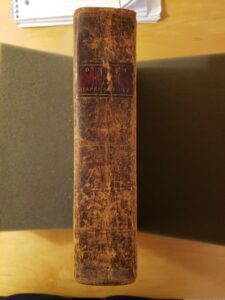
Figure 1: Dispensatory Spine
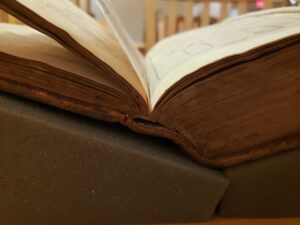
Figure 2: Internal Spine
The Dispensatory’s inside also shows a similar high quality, whether from the pages’ physicality or actual meaning conveyed. The only exception occurs for a couple of pages near the middle where the pages display intense brown stains across the pages (Figure 3). This phenomenon of foxing occurs in cases of age or excess humidity or fungus (“Foxed”). Additionally, typographic markers of age include the use of the long “s” sound in modern day that otherwise appears as an “f” in older texts (Johnston). Finally, the book’s content situates itself in broader early 19th century scientific understanding. For example, scientific debate reflects through discussion of the element mercury, stating, “[Mercury] has no action on the body…It is not poisonous as was vulgarly [supposed],” which is no longer recognized as fact (Duncan 225). Thus, diverse markers of age are displayed throughout the book’s content and physical features.
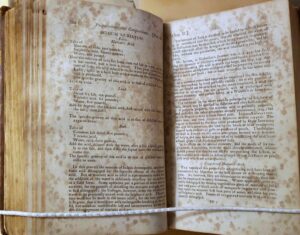
Figure 3: Foxed Page
An examination of the book’s content matter reveals a comprehensible and sensible layout regarding all things medicinal. The book divides into three sections of the “Elements of Pharmacy,” Materia Medica,” and “Preparations and Compositions.” The “Elements of Pharmacy,” as shown in the depiction of the principles of electricity, presents a numbered list detailing scientific principles (Figure 4). “Materia Medica” then moves to detailed description of plants and their medicinal usage (Figure 5). Finally, “Preparations and Compositions” describes creation and handling chemical concoctions (Figure 6). Unique appendixes follow each. For Section I, this includes tables explaining elemental affinities, tables describing chemical reactions to hot and cold temperatures, weights of measurement, solubility tables, illustrated diagrams and explanations, and a chemical symbols table (Figures 7-14). Comparatively, the second section appendix notes substances that have not been included in the British pharmacopoeias, but still exist abroad (Figure 15-16). Finally, a Latin index and English index complete the book’s end (Figure 17-18). A small illustration of a cherub also appears on the book’s last page appropriately holding a “Finis” banner (Figure 17). To help the transition from previous editions, the Dispensatory also clarifies a list of updated terms for reference (Figure 19). Overall, the page layout creates a thorough guide to contemporary scientific theory and methodology.
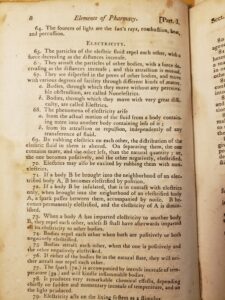
Figure 4: Aged-Tanned Elements, or Section I
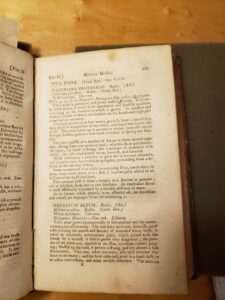
Figure 5- Materia Medica, or Section 2
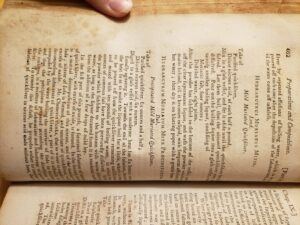
Figure 6-Preparations and Compositions (Section III)
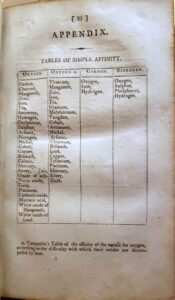
Figure 7- Element Affinities (Appendix I)
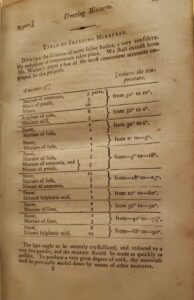
Figure 8- Freezing Point Table (Appendix I)
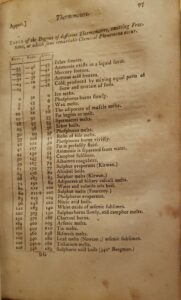
Figure 9- Temperature Table (Appendix I)
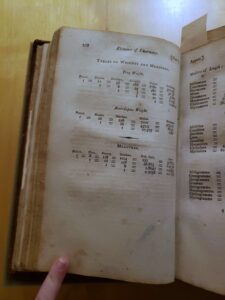
Figure 10- Weight Table (Appendix I)
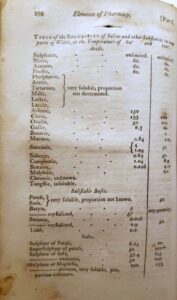
Figure 11-Solubility Table (Appendix I)
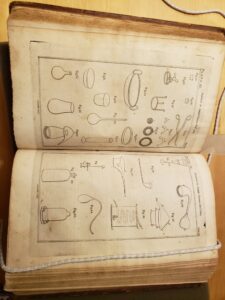
Figure 12- Illustrated Diagram (Appendix I)
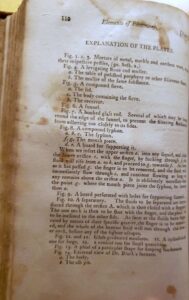
Figure 13- Diagram Explanation (Appendix I)
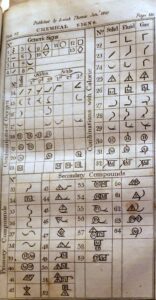
Figure 14- Chemical Symbols (Appendix I)
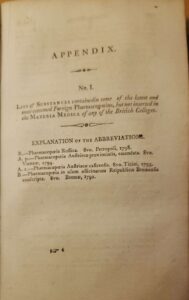
Figure 15-Appendix II Overview Page
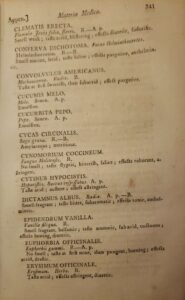
Figure 16- Section II Appendix
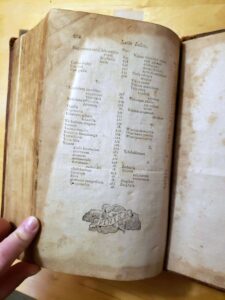
Figure 17- Latin Index
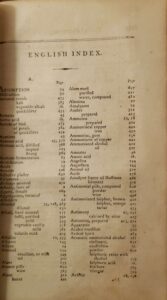
Figure 18- English Index
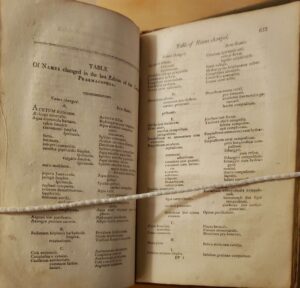
Figure 19- Names Changed
Discussion with Dickinson College’s Archival librarian also revealed more information about the book’s surprises and mysteries. Though the signs of use and damage are limited, they are not altogether gone, but rather few and far between. The front page appears to have water damage, but that is relatively the only place occurring at great extent (Figure 20). Page 474 appears to have some unknown dark substance stuck to a page, too (Figure 21). Amusingly, pencil doodles of some sort of animal are drawn on the unmarked blank backside of the illustration page next to page 115 (Figure 22). However, Pages 166-167 appear to have a tear, which the archivist identified as what would likely come from putting fingers through the page (Figure 23-24). However, there were also strips of paper affixed to both side ends. The paper had cursive writing, making the initial deciphering difficult. But with further help, the archivist theorized the strips of paper to most likely be an attempt at repair, as putting the strips at the end would not obscure the text itself (Triller-Doran). Yet, the repair came at a cost to the book, as stains from the glue can be found having bled over to other the other pages (Triller-Doran). It’s also hard to determine who made these repairs, for though the strips speak of a request, there are no records to show if this corresponds as a marker of the actual repair or mere coincidence (Triller-Doran).
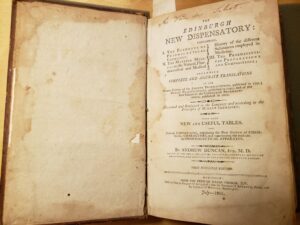
Figure 20- Title Page with Water Damage
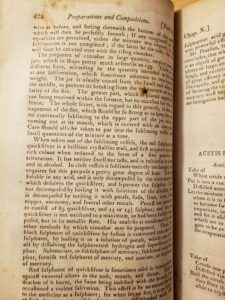
Figure 21- Substance-marked page
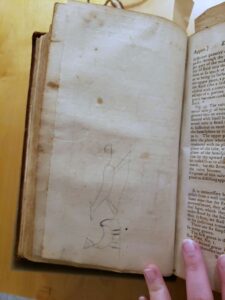
Figure 22-Doodles
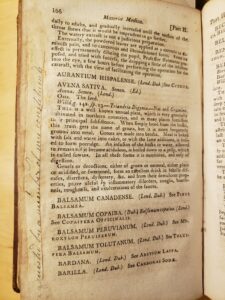
Figure 23- Page 166 with the tear and failed repair
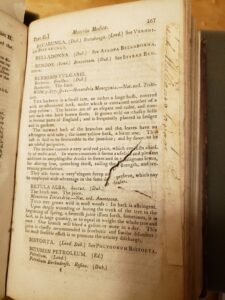
Figure 24- Page 167 with the tear and failed repair
Of course, the preface tells another interesting historical and personal tale. The most recent inscription tells us that this book was a gift to Dickinson College from alum Frank Keefer, and in the original possession of his great grandfather Joseph van der Schot (Figure 25). This theme of familial legacy also appears in the book’s authorship. The Dispensatory’s three parts were compiled by Doctor Andrew Duncan junior, hence the spine title of Duncan’s Dispensatory. On the dedication page, the author dedicated the book to his father, Dr. Andrew Duncan senior (Figure 26). This leads to interesting questions about implicit intersections of personal relationships in this book, such as was the son inspired by the path of the father? Or was the career something expected of the son? Whatever the case, The Edinburgh New Dispensatory provides many fascinating personal, material, and informational questions and even mysteries starting from its base physical features.
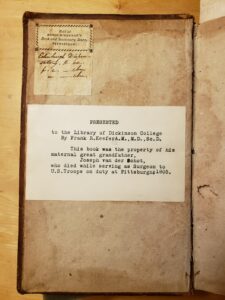
Figure 25- Original Purchase Inscription
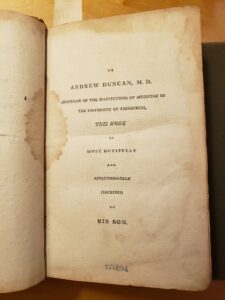
Figure 26- Dedication Page
Works Cited:
“Age-Tanned.” Biblio, Inc., https://www.biblio.com/book_collecting_terminology/Age-Tanned- 210.html. Accessed 11 February 2023.
“dispensatory, n.” OED Online, Oxford University Press, September 2022, www.oed.com/view/Entry/54975. Accessed 3 March 2023.
Carter, John. ABC for Book Collectors. Oak Knoll, 1998.
Duncan, Andrew. The New Edinburgh Dispensatory. Worcester, 1805.
“Foxed.” Biblio, Inc., https://www.biblio.com/book_collecting_terminology/Foxed-69.html. Accessed 2 March 2023.
Johnston, Carol Ann. History of the Book, Dickinson College, 2 February 2023, Carlisle, PA. Lecture.
Triller-Doran, Malinda. Personal Interview. 10 February 2023.
Leave a Reply